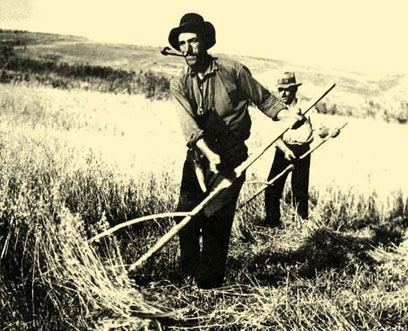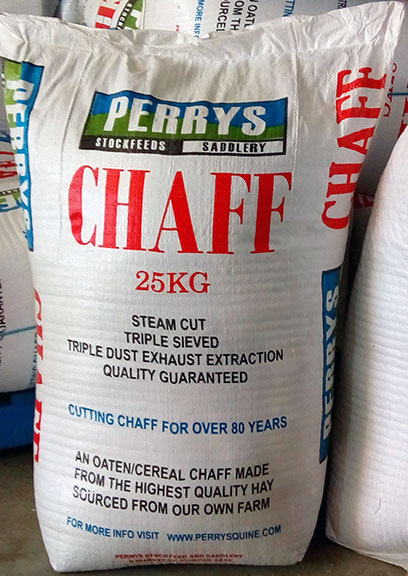Traditionally, chaff referred to the discarded stems of a cereal crop when it was threshed for the grain. This chaff was very low in nutrients for animals, basically just being straw. For this reason the term "separating the wheat from the chaff" referred to finding taking worthwhile objects/things out of less worthy things.
Nowadays, the chaff that is cut for horses is far more worthwhile than the chaff that was threshed from wheat.
The main reason is that the crop for Chaff is cut at a much earlier stage than crop for grain whilst it is still very green - up to three months earlier depending upon conditions. For this reason, the nutrients that will eventually be in the seed are still in the hay stem.

Picture: Historical image of Reaping the Crop
Perrys Chaff is a mixture of oaten and wheaten hay. We cut predominately oaten hay, but also grow wheaten hay as a rotation crop due to the ability to treat oat related weeds in the paddocks. Wild Oats have a similar growing pattern and structure to chaffing Oats. They have a very low nutrient value, and multiply at a significant rate unless treated. Growing a Wheat crop allows us to eliminate wild oats from the paddocks they are in so that the next oat crop grown is cleaner and therefore the chaff is.
The table below demonstrates the nutrient level of sample wheaten and oaten. There is very little difference between the two crops, and each crop will vary significantly more dependant on growing and harvesting conditions.
| NUTRIENT | WHEATEN HAY | OATEN HAY |
| DIGESTIBLE ENERGY (MJ/KG) | 12.3 | 11.5 |
| PROTEIN % | 6.5 | 5.6 |
| NDF FIBRE % | 58.5 | 55.9 |
| ADF FIBRE % | 36.6 | 35.3 |
| WATER SOLUBLE CARBOHYDRATES % | 25.3 | 29.9 |
PLEASE CONTACT US WITH ANY QUESTIONS OR CONCERNS YOU HAVE ABOUT FEEDING PERRYS CHAFF TO YOUR ANIMALS

Picture: Perrys Chaff Bag

Picture: The Perry family surveying their crop